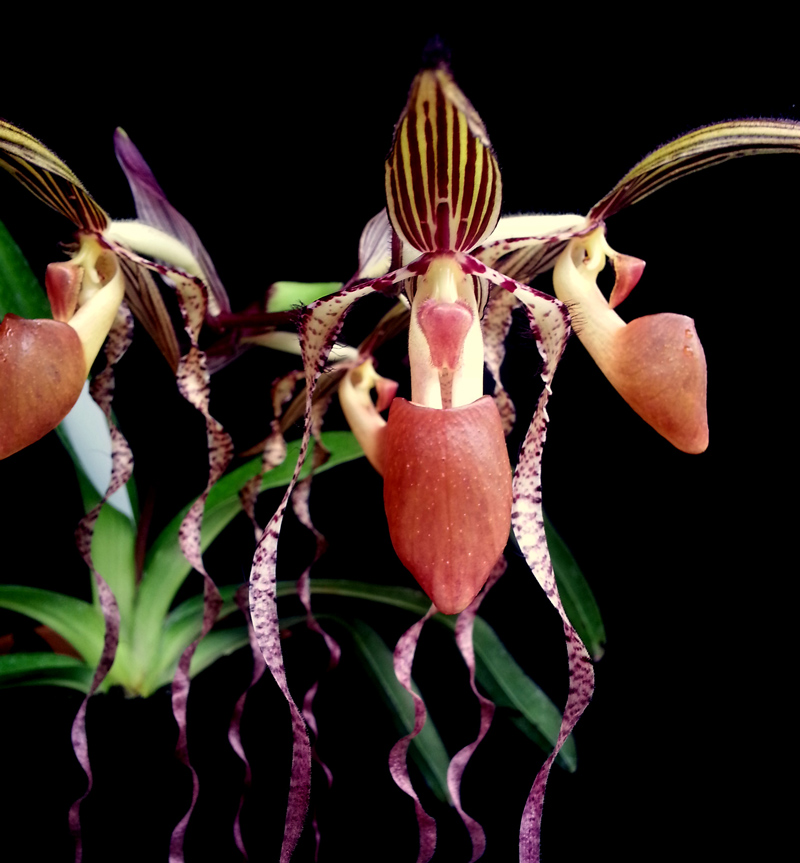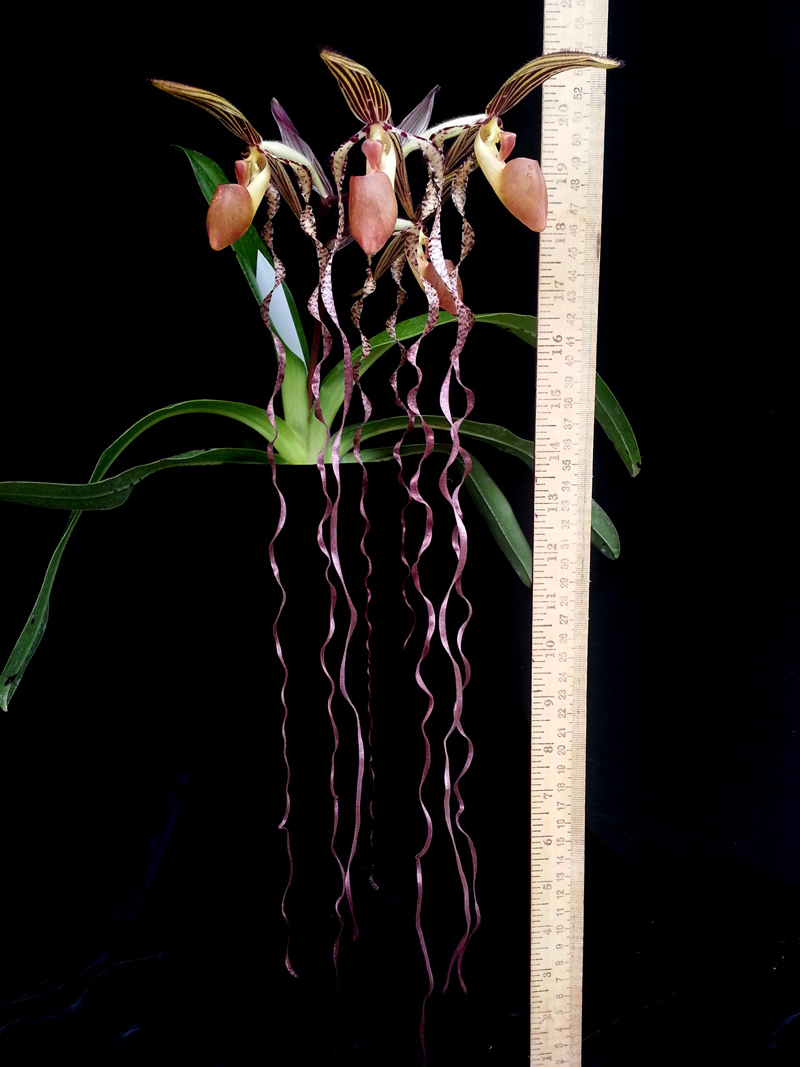Posted on Fri., Nov. 15, 2013 by

A close-up view of the rare Paphiopedilum sanderianum.
I waited 49 years to see this.
When I was 26, one of my best friends from high school introduced me to orchids. While visiting Gary at his parents’ home one day in 1964, I saw some unusual flowers blooming in the oak trees in the barbecue area of the lower garden. Gary said they were orchids. What amazed me most was that the flowers were just growing in the trees with no visible means of support or attention. Seeing my astonishment, Gary said, “That’s nothing, you should see some of the ones in my father’s old books.”
He was right: After several hours of searching through dozens of centuries-old volumes, I was forever hooked on the world of orchids.

The petals are known to get as long as 36 inches.
One of the most alluring of these flowers is a rare species of lady slipper orchid named Paphiopedilum sanderianum, which grows petals that twist and curl downward for up to 36 inches. I read that if one were fortunate to find this specimen, it might cost thousands of dollars to obtain just one small piece. If one were specifically trained to care for this beautifully grotesque jungle creature from the island of Borneo, had plenty of expendable cash, and owned a specialized space in which to grow it, chances are that the orchid still might not survive if the owner was unable to master the challenges of caring for the flower in its delicate early stages of life.
J. Foerstermann discovered P. sanderianum in 1885 and named it after Fredrick Sander, one of the world’s prominent plant lovers and orchid specialists. Unfortunately, the orchid was lost to cultivation a few years later and thought to be extinct. I even tried to locate this species during several expeditions to Borneo, but I never succeeded. During my Borneo trip in the 1970s, a forest ranger named Tony Lamb disclosed to me that he had rediscovered a small colony of the plants near the border between Brunei and Malaysia. Lamb and Phillip Cribb, from the Royal Botanic Gardens, Kew, devised a plan to propagate this extremely desirous species; however, nothing was produced or released to the public for more than 20 years. Local orchid traders ultimately began to propagate the orchid and provide a few samples of this outrageously bizarre plant to the rest of the world.

Lance A. Birk.
I recently joined The Huntington as an orchid consultant after volunteering here since 2010. About a year ago, a supporter of The Huntington sent us a small box with three plants of commercially produced P. sanderianum. And this fall one of those plants burst into full bloom with a short spike of 4 honey-bronze, creamy-white, and green flowers, each trailing 12-inch petals that will grow longer.
“Holy &*^%!” I exclaimed when I saw it in bloom. “It’s been 49 years!”
I expect the other two plants to bloom within the coming year. Although much of what we do with the orchid collection takes place behind the scenes in the greenhouse, we hope to put one of them on view when that moment comes again. I don’t want anyone else to have to wait 49 years to enjoy this rare and beautiful orchid.
Lance A. Birk is an orchid consultant at The Huntington.